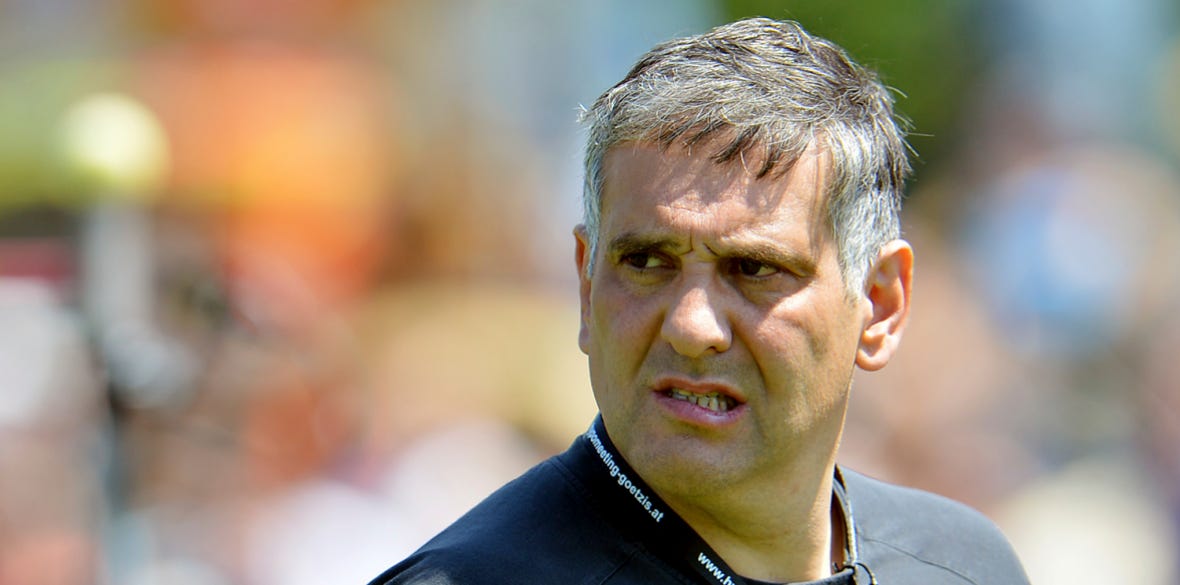Fayaaz Caan ”mocked a para-athlete as “Limp-foot Christie”, described a team doctor as a “fuck-wit” and repeatedly “used industrial language towards his athletes” we learned this week.
Last week, saw Toni Minichiello back at the EIS in Sheffield laughing and joking with officials despite being barred by UK Athletics from coaching or engaging with domestic athletes. The bar was put in place after UKA examined 500 allegations of sexually inappropriate and aggressive behaviour, bullying and emotional abuse and concluded that at least 11 of these were proven.
Are you shocked he was allowed to return to the EIS?
Sadly, after years of working with people who’ve been abused within institutions, I wasn’t. And whether you work in athletics, football, cricket or swimming, if you’re honest, you’re not surprised either. Sport has much in common with other institutions where abusers have evaded apprehension; churches, boarding schools, the police, prisons, the military.
How do these organisations facilitate abuse?
1. They are closed institutions
Closed institutions lack transparency to outsiders and don’t encourage their members to interact with those from outside their sector. Silo mentality flourishes. They end up with a set of norms that are accepted within that sector but wouldn’t be accepted elsewhere. Add in a tendency to look inwards and not to notice how other sectors have progressed. Often, they compare themselves with other parts of the same industry, other regiments, other orders, other clubs, thus amplifying their problems. They become even more narrow in their focus and don’t notice what they’re missing.
Healthy organisations invite outsiders in and are curious about what’s happening elsewhere. They learn from fresh eyes and understand the need for transparency. They look for people who’ve tackled the same problems elsewhere.
2. They have a rigid hierarchy
These organisations have a strict hierarchy with power concentrated at the top among a small group of people that the less powerful can’t challenge. It’s easy to stifle stories that don’t serve the hierarchy when you have this much power.
It’s a brave soul who welcomes the voice of the less powerful and is grateful for pointing out their failings. But that’s how growth happens. We’ve seen how lived experience has made a difference in parts of the health service, this needs to happen in sport. Athletes need a real voice and participation in sports governance.
3. They cultivate a culture of exceptionalism
Being a closed sector allows an industry to bask in its assumption that it’s “special and unique”. Whilst all these sectors perform unique and valuable roles, the structure of the organisations share many similarities and face comparable challenges. Closed culture prevents learning from other sectors that have faced similar challenges and made similar mistakes. Being focused on “specialness” also enables these industries to avoid thinking about what they might get wrong or to notice that they are a magnet for those who want to abuse.
An organisation with a growth mindset spots their similarities with other institutions rather than their differences. They learn from the failings of other organisations as well as their initiatives. Its hard to do this if you’re immersed entirely in the world of sport.
4. They fear change
As a rule, humans don’t like change. Sectors where people look inwards rather than outwards for solutions aren’t going to discover new ways to deal with old problems. They’re destined to make the same mistakes repeatedly.
Healthy organisations know that change is painful. Rather than resist it and cling to the old, they look for fresh opportunities to try something new. They’re not frightened of failure because they know they learn something from trial and error.
5. Diversity is stifled and difference is under-appreciated
Embracing difference and finding ways to include people from different walks of life enables progress and change. Closed institutions have to be dragged kicking and screaming into the present before those at the top can see that difference makes the organisation stronger and more resilient.
They’d rather hold on to their personal power. And we let them off the hook by letting them hold this power without making them accountable for the organisation’s failings.
Instead of issuing statements of intent, Boards need to put their money where their mouth is and take action to be more representative of athletes and the wider population. And when athletes are let down, and abuse happens, we need to start looking at where there could have been intervention to prevent it.
6. Emotion gets shut down
When there’s a game to win, a country to protect, a jail or community to keep safe, emotion is seen as surplus to requirements. Something that will weaken defences and distract from the task. The point to emotion and the information it gives us is forgotten. Fear tells us there is danger, sadness alerts us to pain, guilt tells us when we’ve messed up. When we spend all our time thinking, and avoiding feeling, we don’t have a full picture and we disconnect. We lose our ability to empathise. This puts people at risk.
Contrary to popular opinion, emotion doesn’t make us weak. After all, heroes have courage. There is no courage in the absence of fear. Emotion doesn’t distract from the task. It offers a more detailed picture. And it can teach us new ways to solve old problems. Emotion stops us from looking away or turning a blind eye to wrong doing. We need people in sport to start bringing their emotional selves to work.
Athletes make so many sacrifices. Don’t they deserve better?
What would you like to see change?




